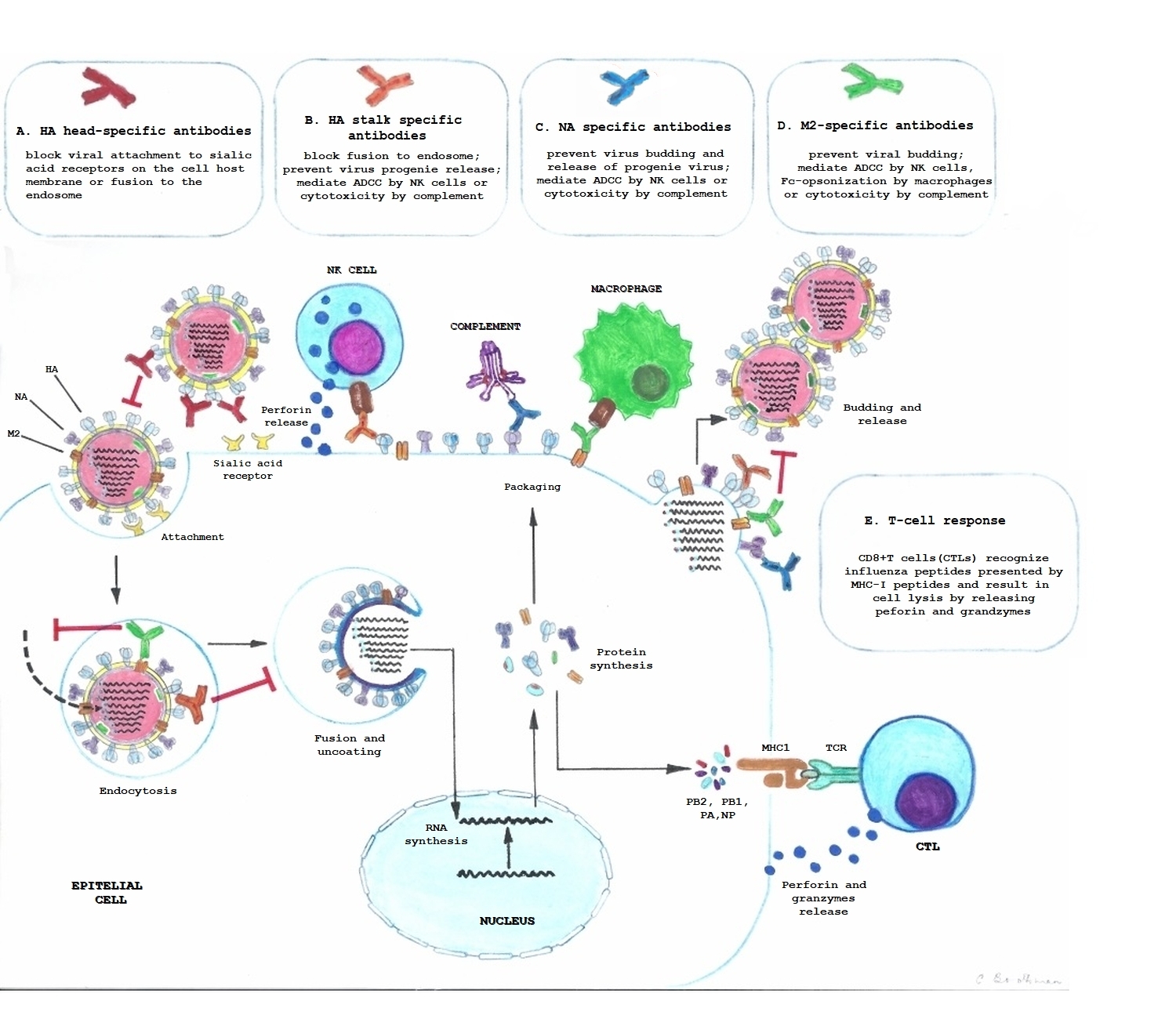What is a Virus? What are Viruses made up of ?
3. Immune Responses to Virus.

T-cells (bottom right) can further recognise specific viral antigens expressed on the surface of the host cell, and destroy it, preventing any further viral replication. Vaccines are designed to elicit these same antibody and T cell responses".
Click on image to enlarge